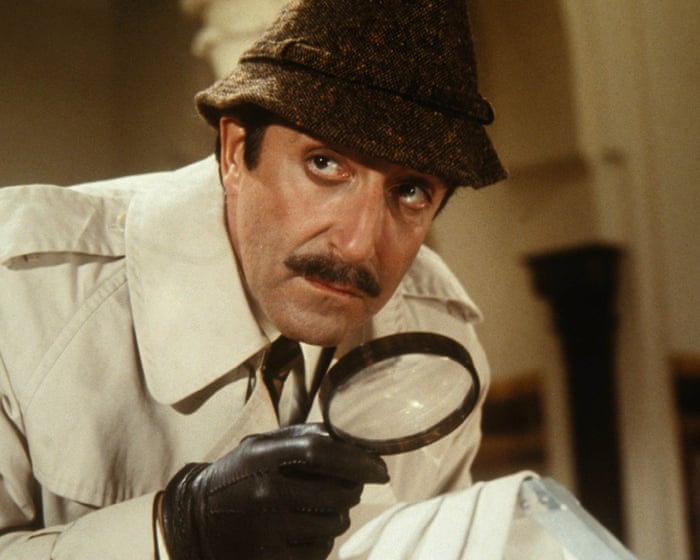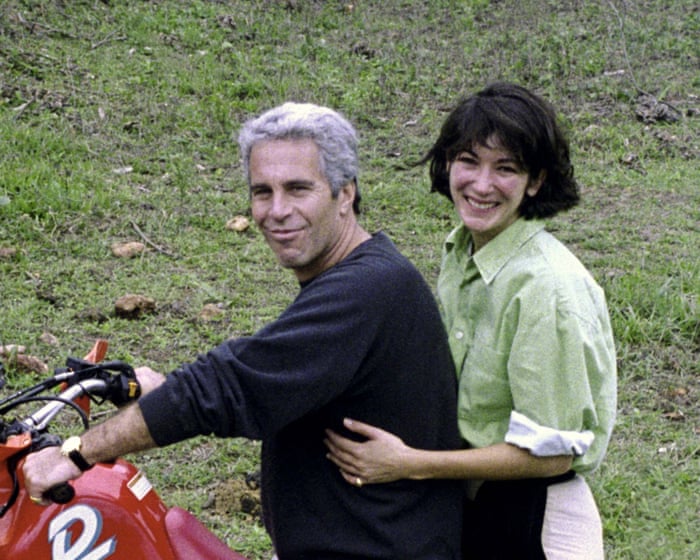“He made me so happy I forgot about my spots”
Michael Palin
Along with Spike Milligan, Peter Sellers brightened my teenage years. I knew Connie Francis would never return my love, but Spike and Peter gave me something almost as good—deep, satisfying, and wildly contagious laughter. Laughter that made me so happy I forgot about my acne.
Spike was the imaginative genius behind The Goon Show, but it was Sellers who brought me to tears with his unforgettable characters: Major Bloodnok, Bluebottle, Henry Crun, Hercules Grytpype-Thynne.
He was my hero long before I even knew what he looked like. On my first day at Oxford University, I formed a lifelong friendship based on our shared love for his album Songs for Swingin’ Sellers (with its cover of legs swinging from a branch). Sellers wasn’t just a man of many voices—he was a gifted actor, and each voice came with a fully realized character. The more I listened to him, the more I wanted to be like him. He showed me there was something far more important than sports, girls, or modern history class: making people laugh.
—
“His funniness was just magically there”
Woody Allen
All I can say about Peter is that beyond his incredible character skills, voices, and technical brilliance, he had an innate funniness that made you laugh the moment he appeared on screen. It’s something you can’t learn, and very few comedians—even successful ones—have it. I doubt even he could explain it. It was just magically there.
—
“I remember thinking: ‘Is it possible to die from laughing?’”
Sanjeev Bhaskar
When I was a kid, my parents and their friends would have these dinner parties where the children were fed first and then packed into a room with the TV. One night, The Party came on—the film where Sellers plays an Indian actor. I laughed so hard I wondered if it was possible to die from laughter. I was in actual pain.
It’s a controversial film now, but I still love it, just as I defend It Ain’t Half Hot Mum. We live in a time where people strip things of context, either praising or condemning them. But to me, his performance was hilarious and brilliantly done. Given its era, I don’t find it offensive—crucially, I don’t think he meant to be. He’d already played an Indian character in The Millionairess with Sophia Loren, which is why I suggested their song Goodness Gracious Me as the title for our sketch show—it felt like reclaiming it.
I wasn’t offended as a child, and I’m not now. It’s a product of its time. You wouldn’t do it today—you’d cast a talented Asian actor—but I’ll always have affection for it.
I consider the decade after The Ladykillers (1955) to be peak Sellers, up until Dr. Strangelove (1964)—a work of genius. That period includes the first two Pink Panther films, with A Shot in the Dark (1964) being my favorite Clouseau performance. His brilliance then lay in the precision of his characters, voices, and comic timing. Maybe he was still proving himself—his Fred Kite in I’m All Right Jack is a performance without ego. But once he became a global star, that precision faded—until Being There, where he returned to his best: a masterclass in detail.
A lot has been written about Sellers, and what always stuck with me was his fear—if you stripped away the characters, would there be anything left?Here’s the rewritten text in fluent, natural English while preserving the original meaning:
—
“If you stripped away his characters, there’d be nothing left.” Blake Edwards said working with him was both the best and worst experience. He was clearly a complicated person, but in terms of pure talent, he was unmatched. I don’t think there’s ever been a better comic actor.
“Meeting him for dinner was like meeting the queen.” – Lesley-Anne Down
My father, like the rest of the country, absolutely loved The Goon Show, and I grew up listening to it. When I worked on The Pink Panther Strikes Again in 1976, I was acting alongside an icon—someone who felt almost superhuman. The first time we met was in Munich. The publicist told me Peter wanted to have dinner with me, and they were really nervous about it. They warned me: Don’t do this, don’t say that, just act a certain way. It felt like meeting royalty. I was tense too, but within five minutes, we clicked. He was my father’s age, but we got along incredibly well. Unlike many men I’ve worked with—on or off camera—he was a complete gentleman throughout the entire shoot.
And it was a long shoot. Today, it would’ve taken three weeks, but with Peter, it stretched to 14. He spent the whole time laughing, joking, and playing tricks—sometimes we barely got any filming done. We hung out day and night for those 14 weeks. The crew was massive, and it must have cost a fortune, but everyone was on board. It was like being at a comedy show—constant laughter, constant fun. Truly an amazing experience.
He didn’t sleep much. He loved staying up all night, going to clubs. He was a fan of The Manhattan Transfer—their sound was huge back then. He also smoked a bit. I don’t think Peter liked himself much, but a lot of comedians are like that—covering up sadness with laughter. He was always searching for happiness. Back then, people didn’t take care of themselves the way they do now. No gym routines, no diets—just eating, drinking, and doing whatever they pleased.
I knew Peter could be difficult—people had warned me—but I never saw that side. There was one day when he and Blake Edwards sat on set, tense and not speaking. I didn’t know why; it wasn’t my business. But that was the only time I noticed anything off. I never saw him angry, upset, or nasty—just funny, kind, and joyful. We got along brilliantly. He was a genius. Seriously, what a career.
“When he worked with directors who gave him freedom, the results were incredible.” – Christopher Guest
I met Peter Sellers once. The Beyond the Fringe cast stayed with my family in New York, and I boldly asked Jonathan Miller if I could be his assistant. So I went to London and worked on his BBC Alice in Wonderland. During a recording at Shepperton Studios, Sellers dropped by. At 19, I somehow thought it was a good idea to do an impression for him. He didn’t say much—just looked at me and nodded.
I’d seen and heard almost everything he’d done. He was a huge influence early in my career. I imagined I could do what he did—different voices, different characters. I can do voices, but Sellers became those characters. That commitment made all the difference. Of course, he was funny, but—
—
The text now flows more naturally while keeping the original meaning intact. Let me know if you’d like any further refinements!He did something no one else was doing.
Peter Sellers in Dr. Strangelove or: How I Learned to Stop Worrying and Love the Bomb, directed by Stanley Kubrick.
His early films were fantastic, even the ones where he had smaller roles. The Kubrick films were surreal in many ways—Kubrick gave him the freedom to perform as he wanted. Most directors didn’t work that way, but when he worked with those who understood and let him do his thing, the results were brilliant. Blake Edwards wasn’t a great comedy director, but he was smart enough to let Sellers run wild.
This is a bit embarrassing, but I remember when he had his first major heart attack in the 1960s. I heard about it on the radio and got so upset that I actually prayed—something I’d never done before and haven’t since. I just thought, Please, whoever’s listening, don’t let him die.
“If he was on, it would be like a raging bushfire.”
—Geoffrey Rush
I first saw him in Tom Thumb when I was seven—a studio film, but Sellers still had that Goon energy. Back then, he hadn’t yet made the leap to full movie stardom. Being a Goon was a prestigious gig—he had a 10-year contract, and he and Spike Milligan were absurdists, jazz-influenced comedians who brought that rhythm to their work.
When I played him in The Life and Death of Peter Sellers (2004), I watched nearly every film he’d ever made. You can see his sense of adventure in early roles like Carlton-Browne of the FO, I’m All Right Jack, and The Mouse That Roared. I asked everyone if they’d met him. My U.S. publicist once had to move furniture at Sellers’ house and said he was brusque, dismissive of someone he saw as unimportant. Marty Baum, his agent in the 1970s, had a different take—he said Sellers was always erudite, polite, and articulate in meetings. These contrasting pieces helped shape the film.
(Image: Sellers in I’m All Right Jack*)
We wanted to capture his complexity—the egomania, the genius. He worked with many brilliant actors, but unlike them, he knew exactly how to define himself. People often asked how I related to him, and I’d say, Every day, I looked in the mirror and played someone else. That kind of constant transformation must have taken a psychic toll. He was self-absorbed, but I imagine he could also be incredibly funny to be around. When he was on, it was like a wildfire.
By the time he made Being There (1979), his performance was as subtle as the finest Chekhovian theater. I remember his wide, childlike eyes and his pale, delicate skin—like someone who’d been hidden from the world. That role proved he was a truly great performer.
“I heard The Goons, and it was like a curtain had been drawn back.”
—Michael McKean
In the U.S., we didn’t know much about Peter Sellers until the early 1960s, when films like Tom Thumb, The Mouse That Roared, The Naked Truth, and Two Way Stretch came out. I’m All Right Jack went over my head at 12—I wasn’t exactly up on union politics. But he was clearly a brilliant actor, especially in The Mouse That Roared, where he played three completely distinct characters. It was thrilling.
Then a friend introduced me to The Goon Show. I think it aired on WQXR, and hearing it was like a revelation—so sharp, so brilliantly crafted.There was a wild, almost anarchic energy to his performances, yet they were always controlled – the work of a true artist, never a mere clown. His brilliance in films like Lolita and Dr. Strangelove captivated me. I noticed early on that many of the actors who made me laugh or left me in awe were British—Alec Guinness, Stan Laurel, Boris Karloff. I was always on the lookout for great performances, no matter where they came from.
I must have watched Dr. Strangelove a dozen times. Once, I focused entirely on Sellers as Group Captain Lionel Mandrake, marveling at the subtle details in his performance. That’s what I love about his work—the small, precise choices. I didn’t pay much attention to his personal life; his artistry always mattered more. When I read Being There and later saw the film, I was struck by how Sellers understood the character better than even the author, Jerzy Kosinski. He took simplicity and made it layered, never reducing the role to just comedy.
I missed The Goons during their original broadcasts, but their 50th-anniversary special in 1972 left a huge impression. The sheer energy and talent blew me away—I listened to their records endlessly, practicing their voices. Sellers’ films, like I’m All Right Jack and The Wrong Arm of the Law, were masterful, and I became obsessed. My favorite of his is the underrated The Magic Christian, often dismissed but unforgettable—where else could you see Michael Aspel and Roman Polanski together?
Sellers made more bad films than any major star. His career can be split into before and after his heart attack. If not for being near a top hospital in Los Angeles, he might have died young like James Dean. Those who knew him said the heart attack changed him completely.
His early British films were strong, but Hollywood was different. In the UK, he was a big fish; in the U.S., he couldn’t control things the same way. He never won an Oscar—nominated for Dr. Strangelove, he lost to Rex Harrison in My Fair Lady. By then, he’d made too many enemies in Hollywood. He wasn’t the type to flatter anyone.
Watching his films in order recently, Being There stands out—a bright spot after a string of disappointments. It proved his talent was still there; he’d just been stuck in bad projects. On that film, he was happy, respected the director, Hal Ashby, and caused no drama. It holds up today, especially in an era where someone like Trump can be mistaken for presidential material.
Playing Sellers in The Ladykillers on stage taught me how much of a chameleon he was—like a musician hitting every note perfectly.Today, we often think of physical transformation as dramatic weight loss or gain—like an actor bulking up to play an action hero. But Peter Sellers took it further, embodying his characters in ways that went beyond appearance, with astonishing results. Some changes were subtle, others extreme, but always utterly believable.
In The Pink Panther Strikes Again, Sellers’ portrayal of Inspector Clouseau is wonderfully tense and uptight, creating a fragile tension that makes the comedy even funnier. The contrast between his smooth, confident voice and his clumsy, chaotic physicality is brilliant. His ability to play the role completely straight, teetering on the edge of absurdity, is pure genius.
One standout scene is when Clouseau arrives at a house to question the staff—it’s theatrical farce at its finest. Sellers moves like a dancer, gliding between characters and objects, or like a musician hitting every beat with perfect timing. The energy is electric, as if everyone is barely holding back laughter. He was hilarious, yet made it seem effortless.
Sellers achieved what every actor dreams of but doubts is possible—perfection.
A Peter Sellers season runs at BFI Southbank, London, from August 2-30, while Two Way Stretch and Heavens Above will be released on Blu-ray on August 4.




